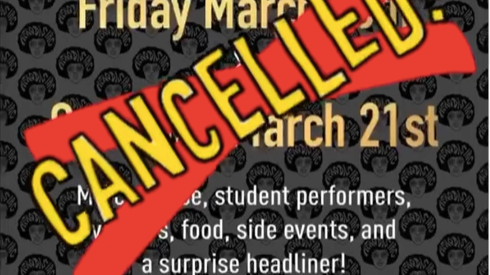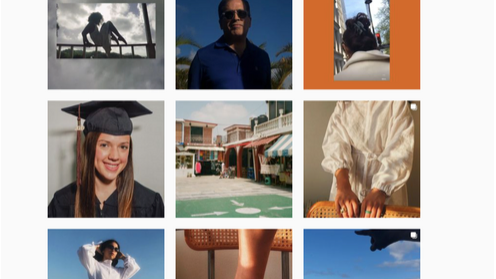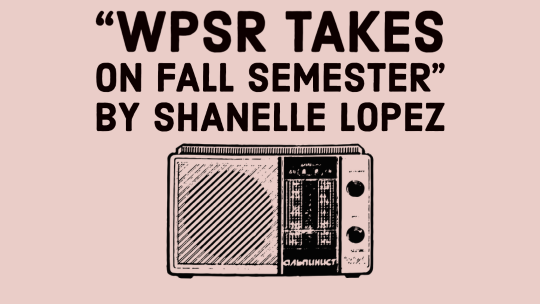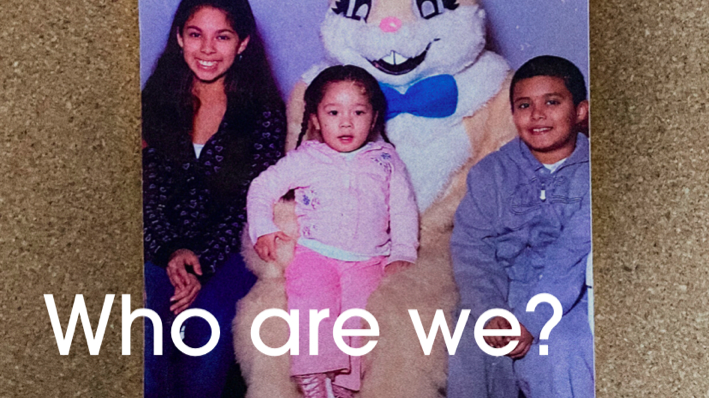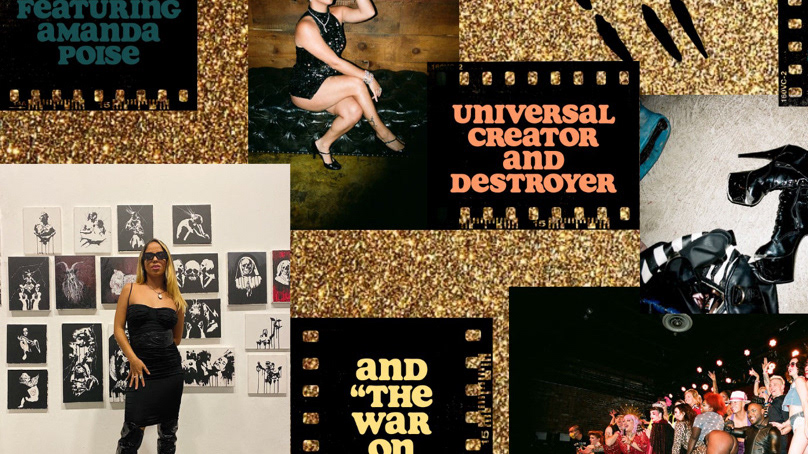This piece was published in the Purchase College Phoenix Newspaper:
Sonya Rio-Glick, a senior arts management major, is putting together a contemporary dance piece to express her experiences with her disability in her everyday life and on the Purchase College campus.
Sonya Rio-Glick and Leslie Merced in Rehearsal. (Photo from @thisbodysheart Instagram)
Can you explain your disability and how it affects the development of your senior project?
I identify as disabled and chronically ill as a result of several chronic health conditions: I have cerebral palsy, a neuromuscular disorder I was born with that affects my motor skills and gait. Comorbid to the CP, I live with chronic fatigue, nausea, and overstimulation. I also have a blood sugar disorder called hypoglycemia and Post Traumatic Stress Disorder. Stories explicitly about disability and chronic illness are very rarely told in theatre, dance or film, so it was important to me to tell my story specifically. I was careful to only tell my story, as I cannot speak to the experiences of other sick and disabled people. If they relate to “This Body’s Heart” (Sonya’s senior project title), that’s great! I am writing a research paper alongside the production called “Know Thyself: Congenital Physical Disability and Contemporary Dance as Paths to Deepened Self Awareness,” which explores the two as resulting in more emotional intelligence when in one’s life from a young age. I believe my experience as a person with a physical disability makes me a more intuitive, inventive choreographer and a bit more empathetic, deep-thinking person.
How has this project impacted you while putting it together?
It has definitely been a learning experience in terms of arts management because I am directing, choreographing, producing, performing, and now costume designing as well. So I’m doing a lot, I’m wearing a lot of different hats. I love choreographing. I think it’s so much fun, and it's a difficult process so much in that I have to do a lot of research beforehand and then use Leslie Merced, the dance captain, and others to try it out.
You mentioned the process of choreographing the piece through Leslie and having to explain exactly what you want the movement to look like; can you elaborate?
I am usually first inspired by music, or in reflecting on poignant personal experiences, I will begin to see a movement sequence in my mind’s eye. Once I can verbalize my vision succinctly, I write it out in seconds. This is easier when I have a score to work off of. This is often a “stop and go” process, as I will pause to look up movements and dance terms on YouTube until I find what I see in my head. The piece begins to choreograph itself, as in, it is easier to generate specific movement once there is a foundation to base it on, versus coming up with specifics based solely on an abstract concept. The writing and researching stage can take several days based on the length and nature of the piece. Once I have a full piece written out, I try to find time to talk through it with Leslie or my co-choreographer, Alena Brocker. They provide creative edits, and Leslie will step through the movement to give me a visual and smooth transition. Once I am in the room with the dancers, we go from the beginning, and I share each phrase with them. I’ll often use pop culture/media references to explain movement quality or the emotion I’d like conveyed. Putting the phrases on bodies is also “stop and go,” as it usually takes a few tries for them to fully adapt to what I am communicating.
There are six pieces of all contemporary dance about your experiences in your senior project. Where did the idea spark from and what made you choose contemporary dance to be like what is showing your experience and telling your stories?
I’ve always been interested in dance. I have been choreographing since I was about 13, but only like small-scale projects just on me and maybe another person. I wanted a chance to work with more dancers and do a larger scale piece, so I knew I wanted it to be danced from the moment I got to Purchase; the concept came from my struggle with the lack of fire evacuation policy for students with physical disabilities on campus. When I was sort of resolving that issue I think a lot in terms of choreography like in my head, so I thought what would it look like to create the experience of being trapped in a building into a movement sequence and sort of dramatizing it so I crafted this three-minute piece that simulates like an alarm going off and getting stuck. The pieces are titled “Area of Refuge,” “Walk With Me,” “Keep Breathing,” “Overstimulated,” “Sacred Tension” and “As I Am.”
Can you explain more about the impact of the fire drills you were stuck in? How has that affected you and how has the school responded?
From Aug. 24 to Dec. 13, 2018, I, along with at least four other physically disabled residents of the Fort Awesome dorm, was left in the building during fire alarms and unable to get down the stairs from the upper floors. We were not told if it was an emergency, and no one came to get us or check on us. When I inquired as to why and how to get out, I was sent from office to office with no answer because the entirety of policy was one paragraph of bullets that solely placed responsibility on students, presumptuously stating what we should do to keep ourselves safe. The many meetings that ensued went close to nowhere, the school still refusing to put in writing that we will be evacuated at all, as that is a liability. I made so much noise with protests, news appearances, and external complaints to the school that I was eventually bought out, the school building me an accessible first-floor dorm from which I can independently evacuate. However, I developed severe PTSD, had a panic response to fire alarms, and briefly stopped eating and sleeping due to the stress. I was not compensated for the multitude of meetings I had to attend, often writing and reforming policy on behalf of the school in an effort to make effective change, as it seemed that whatever the school came out with was meaningless lip service. There is now a more extensive policy, but the school is still not held accountable within it, instead of placing undue responsibility on students, who by definition have extenuating personal care responsibilities already due to disability and chronic illness.
How are you feeling about the development of the COVID-19 pandemic arising and its effect on your senior project presentation that was scheduled for April?
The only word I keep coming back to in response to the cancellation is “devastated.” The timing of the outbreak is hard to wrap my mind around: what are the odds that five weeks before opening, the world's first pandemic in 100 years starts to spread uncontrollably? I have received overwhelming support from peers and faculty offering resources to mount the production elsewhere in the future, likely in New York City. I would like to pursue this, but am waiting out the crisis before I put anything in motion.
If you can describe your Purchase experience in one word or short phrase, how would you do it?
Do you know that song “I Will Survive”? That’s my Purchase experience.
Sonya Rio-Glick on zoom for the Jandon Business of the Arts Lecture. (Screenshot of Zoom by Shanelle Lopez)
Sonya Rio-Glick has been selected as the 2020 Jandon Student Award winner, which is a student achievement award through the arts management department given annually to a high-performing senior, in part for her work on “This Body’s Heart.”
